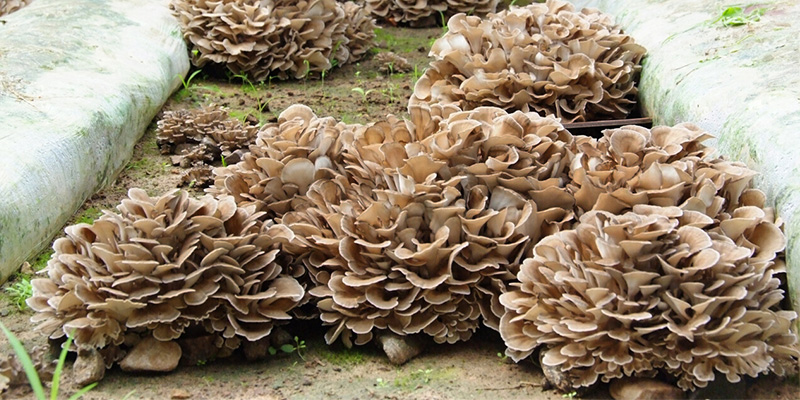Operational points of steps such as harvesting and grading of Grifola Frondosa

1. Timely harvest
Chestnut mushroom harvesting standards are not strict, generally 18--25 days from the appearance of primordia to picking. When the back of the cap is white and smooth, the fruiting body on the back has fungal pores, and there is a round of small white edges on the edge of the cap, and the edge becomes thinner. The best harvesting period is when the mushroom cap is relatively flat, the color becomes light gray-black, and it emits a relatively strong mushroom fragrance. The outer edge of the mushroom cap is light white, and the edge is slightly rolled inward. The brittleness of the mushroom body is gradually weakened, and the toughness is gradually strengthened. At this time, the maturity of harvesting is eight mature. When the maturity is 70%, the quality is good, the taste is the best, the sales price is high, but the yield per unit area is low. Chestnut mushrooms harvested at eighth maturity have a good taste and a higher yield per unit area. They are mostly harvested at this time for the supply of enterprise canteens, supermarkets, e-commerce, distribution companies, catering companies, community direct sales and picking. Harvested at nine maturity, the mushroom body is larger and the yield per unit area is high, but the meat quality of the mushroom body is slightly loose and the taste is slightly poor. Most of them are used for community direct sales, farmhouse entertainment and drying. Chestnut mushrooms harvested at maturity have loose flesh and poor taste, mostly because the growers cannot harvest them in time and the products are seriously unsalable. Producers should comprehensively consider harvest maturity based on sales channels, selling price, and per unit yield.
Water spraying should be stopped 1 day before harvesting to maintain good commerciality and suitable water content. When harvesting, it should be handled with care to keep the shape of the fruiting body and avoid mechanical damage. Harvest after the dew has dried and before 8:00 a.m., which can not only avoid sticky mud on the leaves during harvesting, but also keep the temperature of the mushroom body lower, which is conducive to maintaining quality and reducing the incidence of rot in storage and transportation.
2. Grading according to the length of mushroom leaves
The main problems affecting the commerciality of chestnut mushrooms are: mushrooms are brittle, easy to break, easy to crack, easy to rot, short shelf life, and high loss rate. Appropriate shading can keep the caps in good color; maintaining high humidity can prevent the caps from cracking, and the watering time should be carried out after harvesting in the morning, but if the humidity is too high, it will easily cause the subsequent links to rot, so a balance needs to be grasped . Different sales channels have slightly different commodity requirements. Improper operations in mining, transportation, and sales may cause mechanical damage. The cause should be analyzed and targeted measures should be taken. The caps are uniform in size, similar in color, free from cracks, and those with small pores have good commerciality.
Chestnut mushrooms are harvested at eighth maturity. Commodity requirements: fruit bodies are fresh, there is no white growth ring on the outer edge of the cap, the edge becomes thinner, and the cap is flat. The color is light gray or off-white. There are tiny pore layers on the back of the stipe and the cap, but no pore appears 1cm away from the edge of the cap. Harvest when the fruiting body is still young.

(1)(1).jpg)
 CONTACT
CONTACT